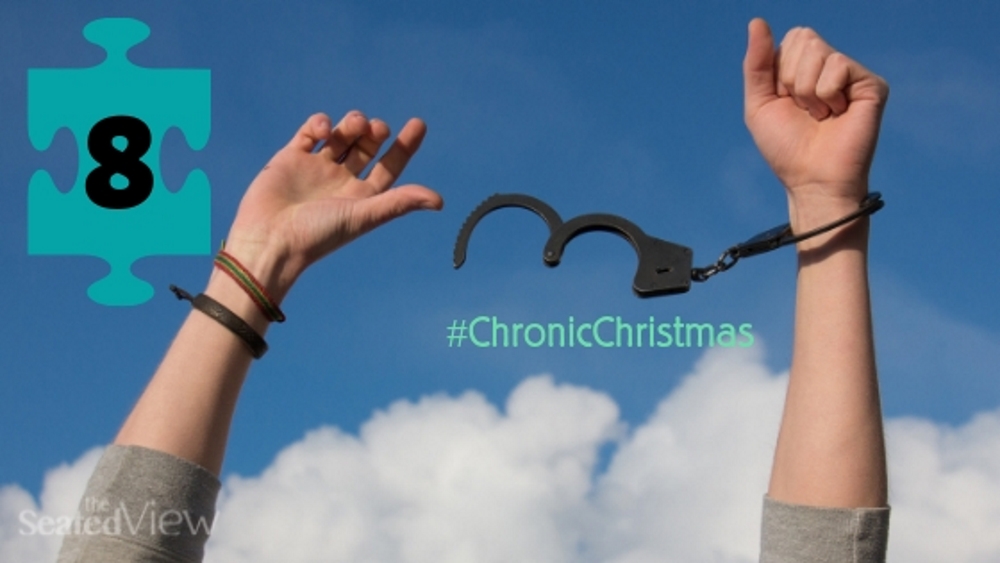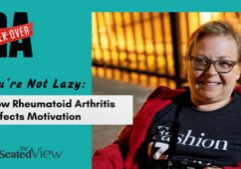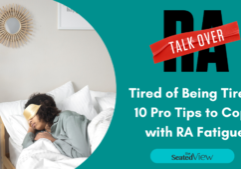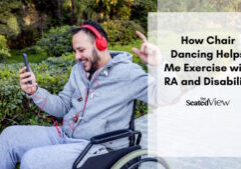#ChronicChristmas Gift Guide Day 8: Personal Pain Relief

Description: Raised arms, a pair of handcuffs released from the left and against a blue sky. Image has the number 8 is a puzzle piece and the hashtag #ChronicChristmas
This is my daily Advent calendar of gift ideas for people with chronic illness, running from December 1-25. Some entries will contain affiliate links.
Treating chronic pain takes a toolbox. It’s not like that “minor arthritis pain” of commercials or other types of acute and temporary pain that someone healthy might experience. On top of that, the effects of the war on opioids have reduced the availability of the kind of meds that pack a punch, so it’s become even more important to find other techniques. Many of us use things like heat and ice, rest, range of motion exercise, distraction, and much more.
And then there’s technology. Today, I’m going to share three methods that some people with chronic illness use to ease the pain. These are the kinds of gifts that warrant a conversation with your friend or family member first, and then they may need to have a chat with their doctor. These solutions don’t work for everyone and are not appropriate for everyone, but can be highly effective.
Oska Pulse. This is a small blue oval that uses pulsed electromagnetic fields to relieve pain, inflammation, and increase mobility. I haven’t used this myself, but have heard very good things about it, and have seen a lot of people in the chronic pain community use it. It’s on the pricier end, but if this is something your friend might want to try, there’s always crowdfunding among their support circle.
Ultrasound. Ultrasound can be a wonderful help for seized-up or damaged muscles, such as what happens in fibromyalgia. I know first-hand the difference it can make for some. Years ago, my fibromyalgia was so severe that my neck and shoulders were always hopelessly seized up. I was very close to giving up working because I simply couldn’t use the computer for longer than 10 minutes at a time and my quality of life was completely in the toilet. My doctor tried everything, then as a last resort, sent me to ultrasound, saying “I don’t think it’ll work, but we can try.” And I could feel the healing happening after the first treatment. Ultrasound saved my career (and my ability to enjoy my life).
My physical therapist recommended a 1.0 MHz personal ultrasound — no higher — and it’s a very good idea to get some training in how to apply it. Note: it’s very important not to use it on bones and definitely not on metal joint replacements or other bionic bits.
TENS. Many physical therapists and sports therapists use TENS for pain relief. You place pads on certain areas of your body and send a gentle electrical current through them to stimulate and apparently also block pain signals. Again, this may not work for everyone or be appropriate for all conditions, and it definitely require some training by a physical therapist in how to use it.
Read More
Discover what else I've been writing about...















